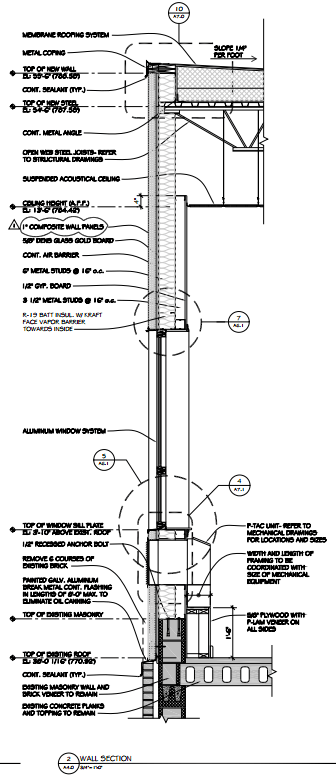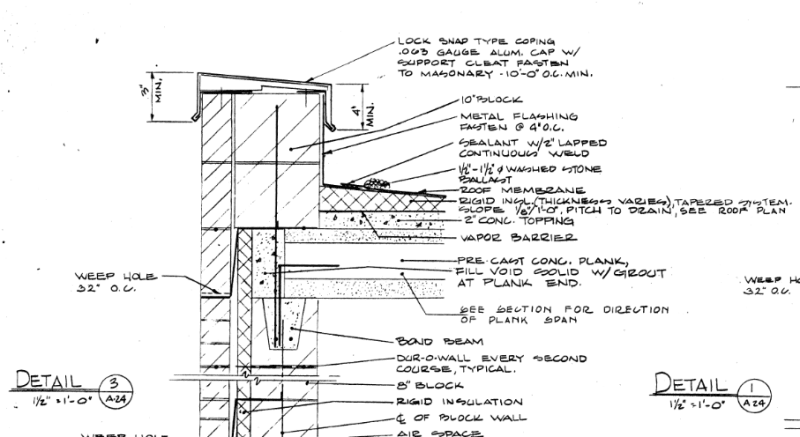structSU10
Structural
I have a condition where there are existing long span bar joists (span ~50') roof bearing on a CFMF wall that was built no top of an HCP on block bearing wall building. The CFMF wall bears on what was the old parapet of the block building. The section below shows the condition, although this architectural section shows the plank the wrong way - it bears on the wall in question (span ~22').

The renovation for this building calls for the CFMF to remain and the block wall to be demolished. I think I need to keep at least the bond beam below the plank, as the parapet has reinforcing that extends down into the bond beam, but I don't know that I feel great with 8" of block left below the plank to bridge between needle beams prior to the permanent support installation. What are others thoughts on this? Do I need more block to remain? Architect wants to keep as much head room as possible of course.
Roof dead load ~20 psf, if they have to do this in winter, an additional 35 psf snow. plank loads are ~100 psf dead load, plus construction live loads.

The renovation for this building calls for the CFMF to remain and the block wall to be demolished. I think I need to keep at least the bond beam below the plank, as the parapet has reinforcing that extends down into the bond beam, but I don't know that I feel great with 8" of block left below the plank to bridge between needle beams prior to the permanent support installation. What are others thoughts on this? Do I need more block to remain? Architect wants to keep as much head room as possible of course.
Roof dead load ~20 psf, if they have to do this in winter, an additional 35 psf snow. plank loads are ~100 psf dead load, plus construction live loads.

